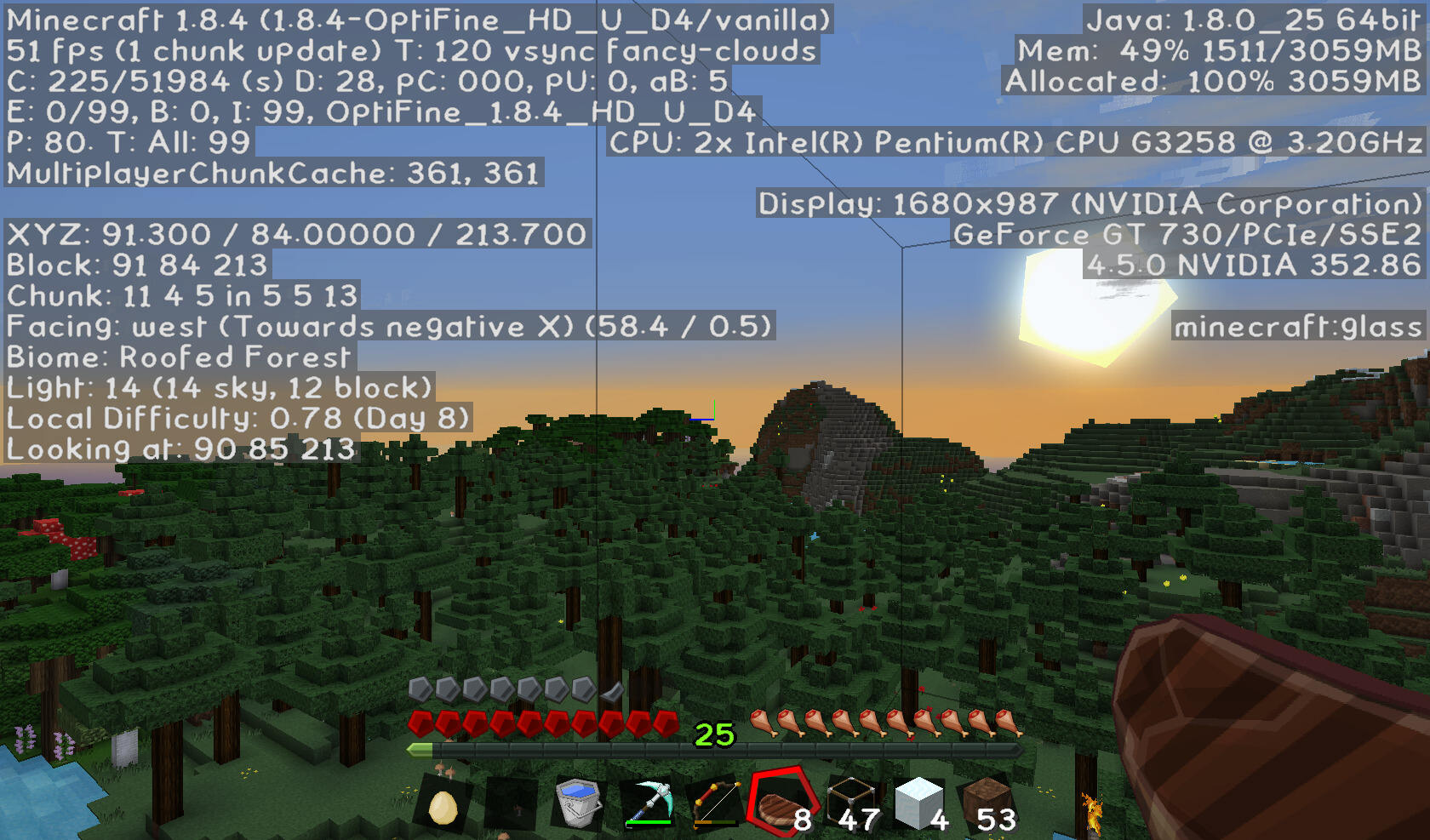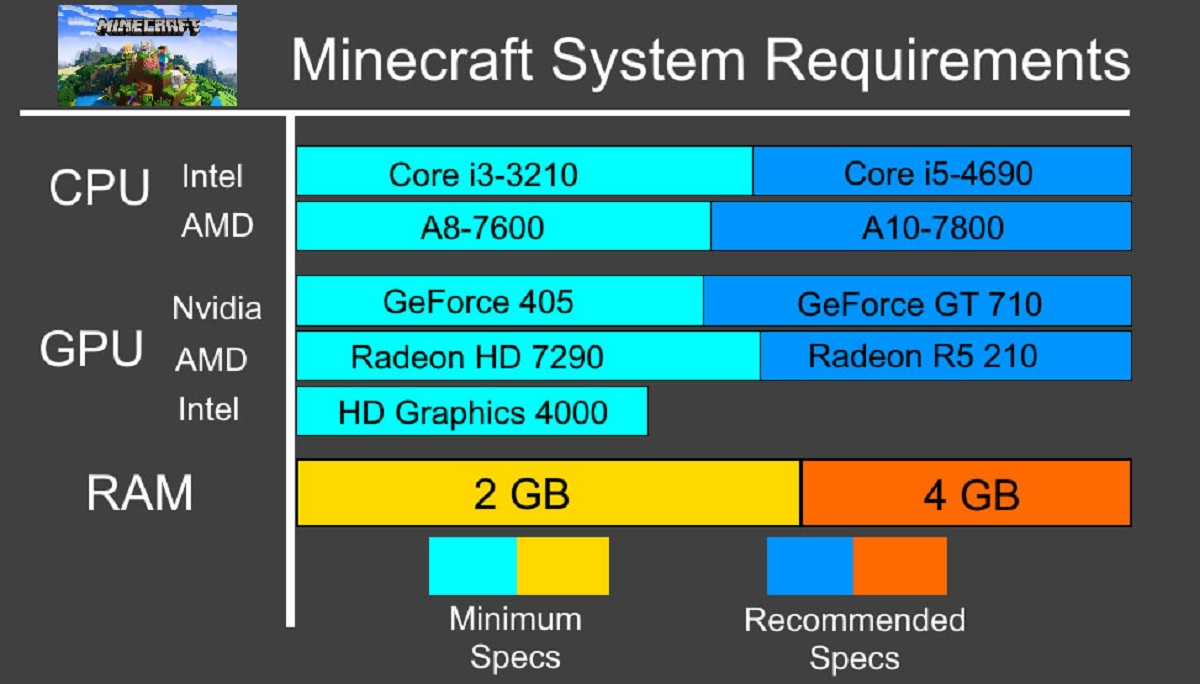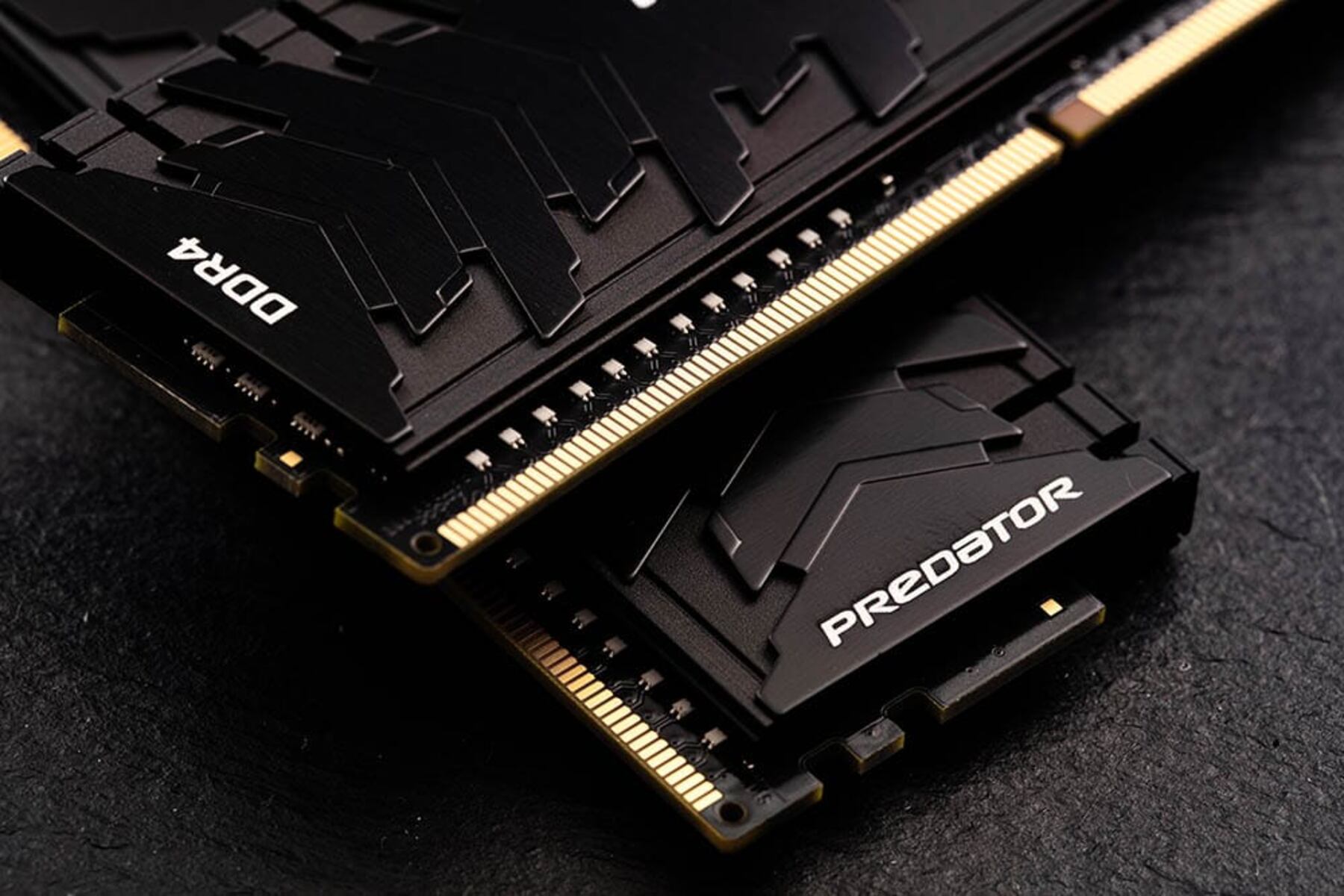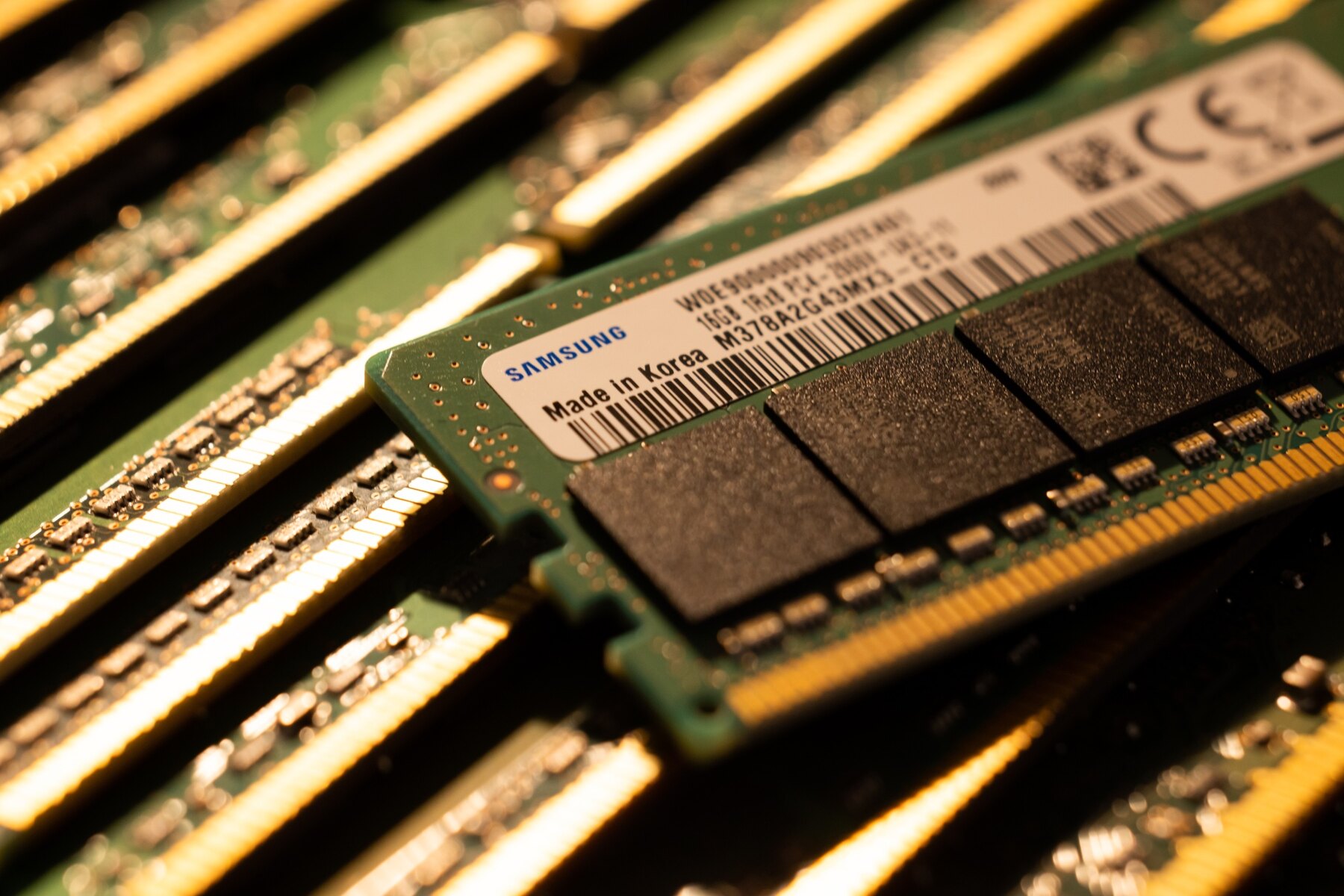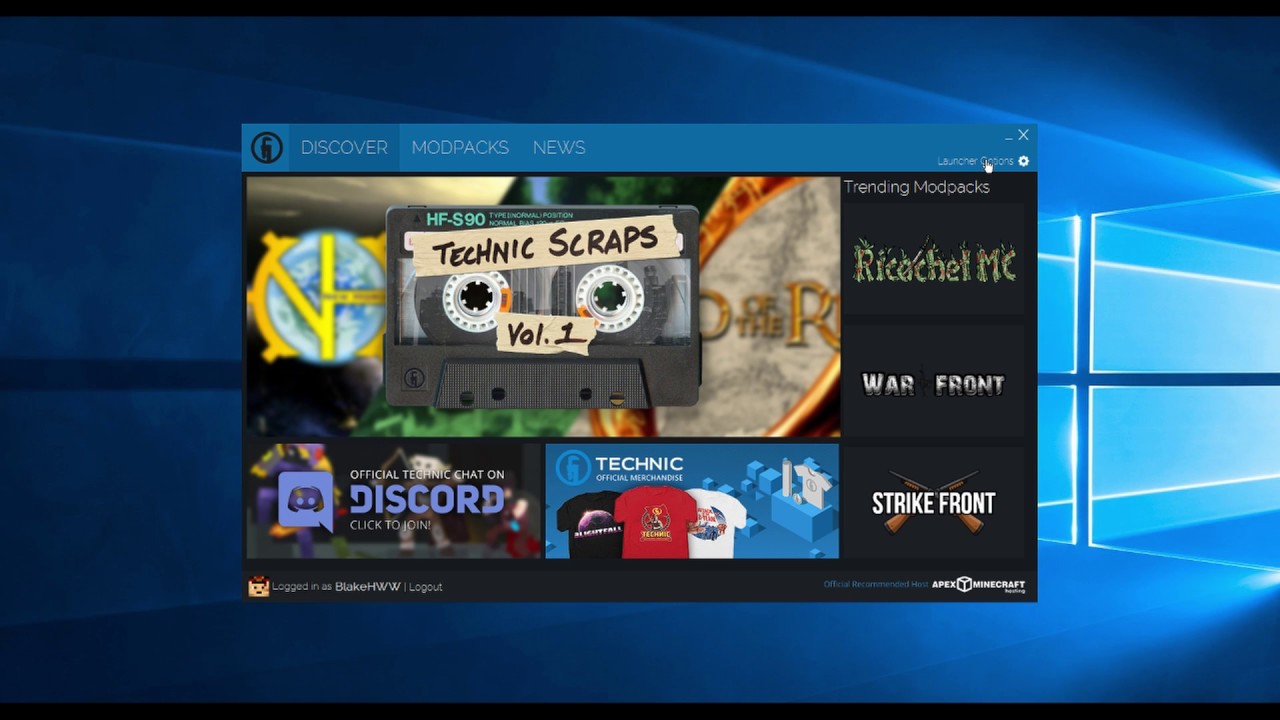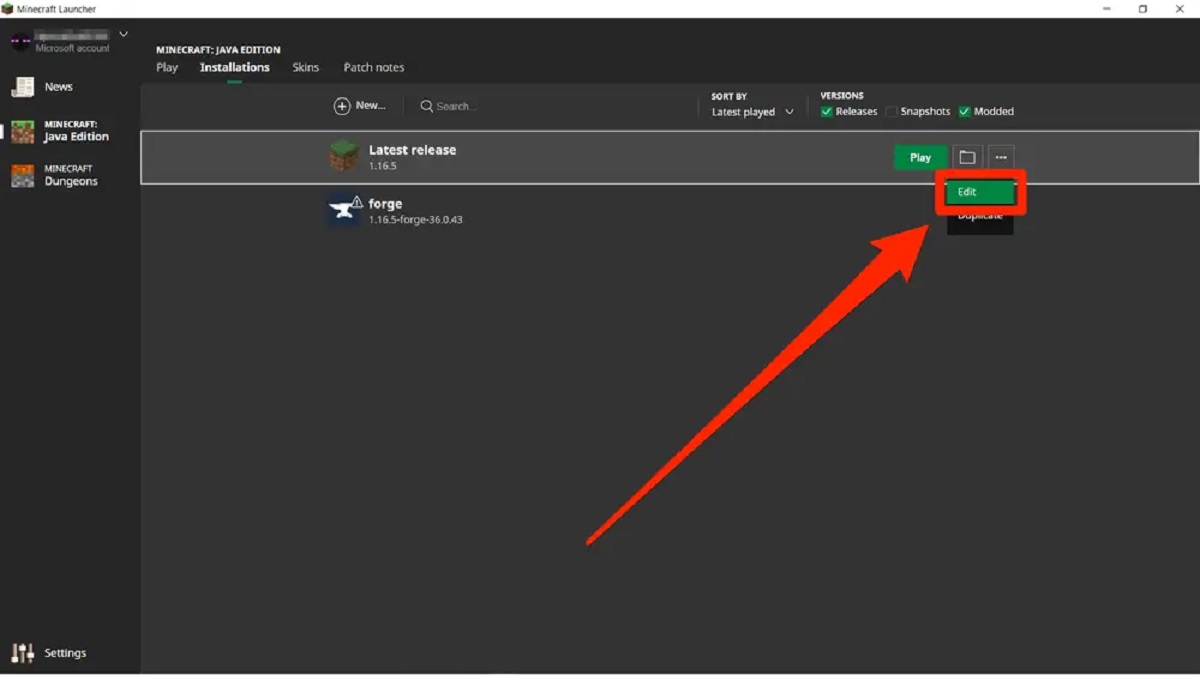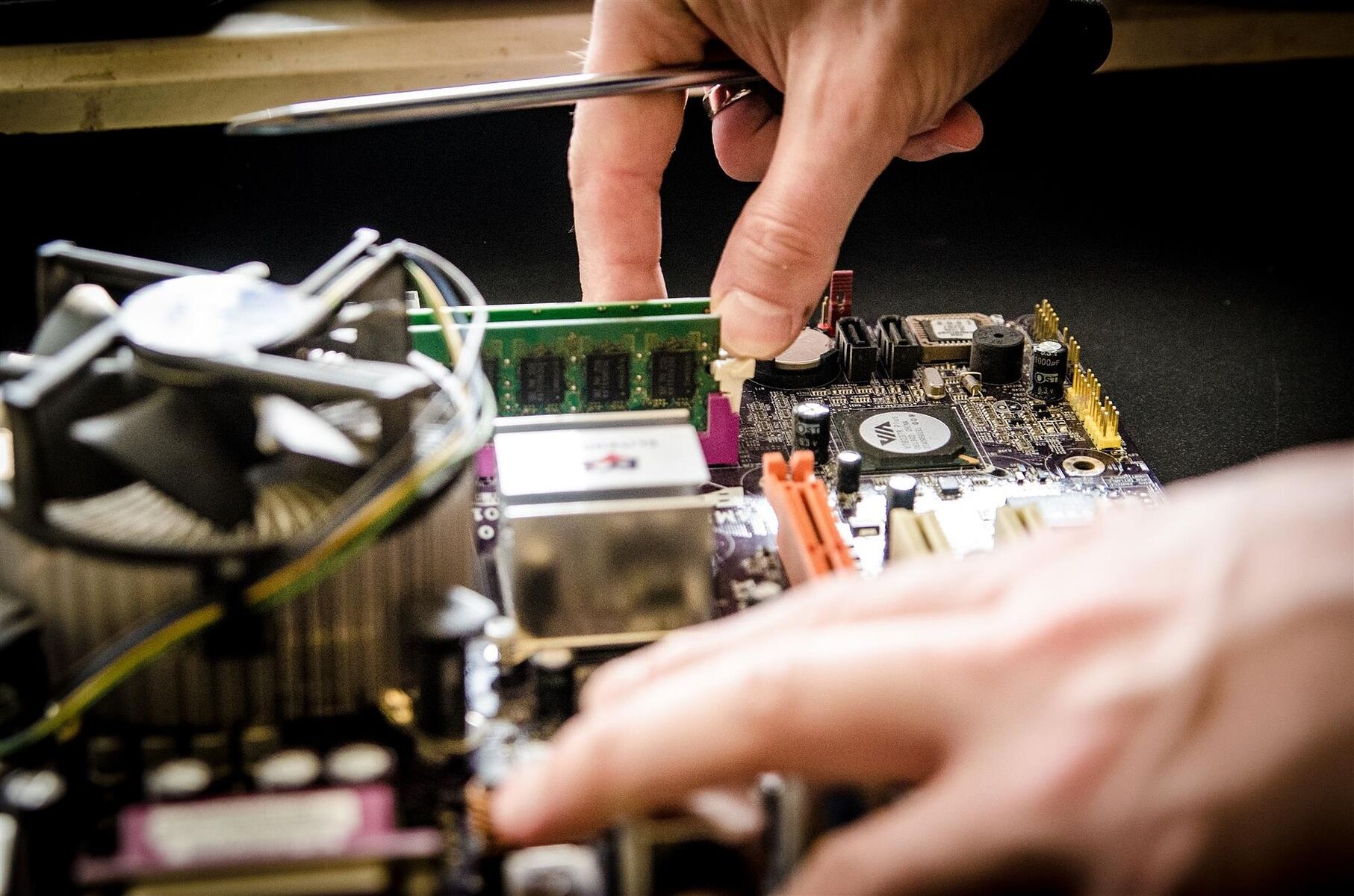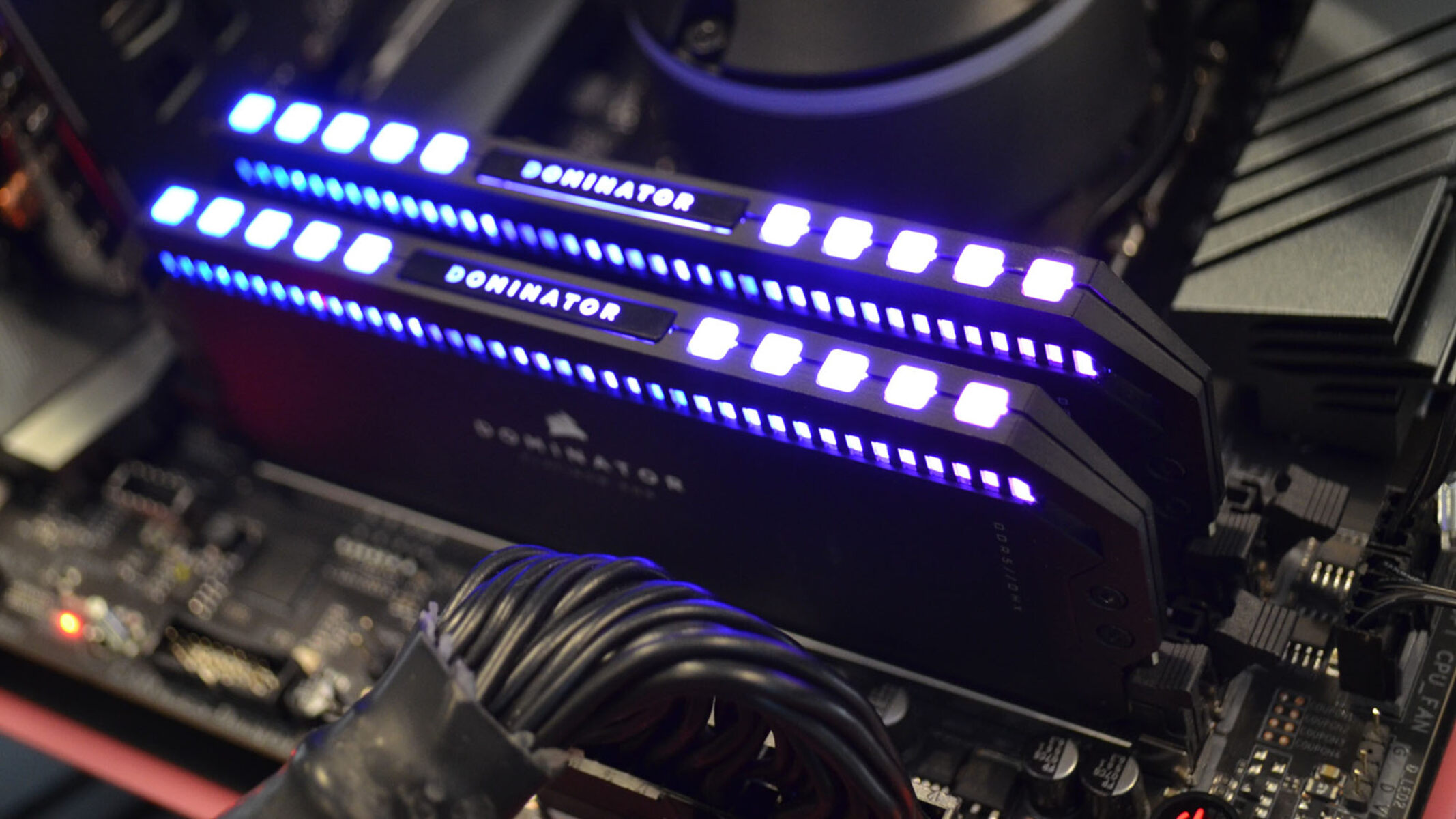Introduction
Welcome to the exciting world of modded Minecraft! Whether you are a seasoned player or just diving into the modding scene, you have probably heard about the importance of allocating RAM to your Minecraft game. But what exactly does it mean to allocate RAM, and how much is enough?
In vanilla Minecraft, the game runs smoothly with the default RAM allocation. However, when you start adding mods to your game, the demands on your computer’s resources increase significantly. Mods add new features, items, and mobs that require additional memory to run properly. If you don’t allocate enough RAM, you may experience lag, poor performance, or even crashes.
Allocating RAM refers to the process of reserving a specific amount of your computer’s memory to be dedicated solely to Minecraft. Essentially, it gives the game more breathing room to handle the increased load caused by the additional mods you have installed. By allocating more RAM, you can ensure a smoother and more enjoyable gameplay experience.
However, it’s important to note that allocating more RAM does not necessarily guarantee better performance. While having more memory can help, other factors, such as your computer’s specifications and the efficiency of the mods you are using, also play a crucial role.
In this article, we will explore the factors you should consider when deciding how much RAM to allocate for modded Minecraft. We will also provide some general recommendations based on the type of modpack you are playing. Additionally, we will share tips on optimizing your RAM usage to get the best possible performance out of your modded Minecraft experience.
So, if you’re ready to take your Minecraft adventures to the next level, let’s dive into the world of RAM allocation and discover how much RAM you should allocate for modded Minecraft.
Why RAM is important for modded Minecraft
RAM, or Random Access Memory, is a critical component for running modded Minecraft smoothly. When it comes to modding the game, the number of installed mods and their complexity can significantly increase the memory requirements. Here’s why RAM is crucial for a seamless modded Minecraft experience:
1. Handling the additional content: Mods add a plethora of new content to the game, including blocks, items, mobs, and complex mechanics. All this extra content requires additional memory to be loaded and processed. Insufficient RAM can lead to sluggish performance, long loading times, and even crashes as the game struggles to handle the increased workload.
2. Running complex modpacks: Some modpacks combine multiple mods together to create an immersive and challenging Minecraft experience. These complex modpacks often require more RAM to ensure smooth gameplay. Insufficient RAM can cause the game to stutter, freeze, or become unplayable altogether.
3. Avoiding memory-related issues: When modded Minecraft runs out of memory, it can result in out-of-memory errors, also known as Java heap space errors. These errors can abruptly terminate the game or cause significant lag spikes. Allocating sufficient RAM helps prevent these memory-related issues from occurring.
4. Multitasking: Allocating more RAM to modded Minecraft allows you to run other applications simultaneously without impacting game performance. This is especially useful if you like to stream your Minecraft gameplay or use resource-intensive programs, such as video editing software, alongside the game.
5. Future-proofing your game: As new mods are constantly being developed and existing mods are updated with additional features, the memory requirements of modded Minecraft will only continue to rise. By allocating ample RAM, you future-proof your game, ensuring that it can handle the mods and updates that come down the line.
In summary, RAM is vital for a smooth and enjoyable modded Minecraft experience. It allows the game to handle the additional content, prevents memory-related issues, enables multitasking, and ensures your game remains compatible with future mods and updates. With the right amount of allocated RAM, you can explore complex modpacks, build intricate structures, and embark on exciting adventures without worrying about performance issues.
Factors to consider when deciding how much RAM to allocate
Allocating the right amount of RAM for modded Minecraft is crucial to optimizing performance and avoiding potential issues. However, determining how much RAM to allocate can be a bit tricky, as it depends on several factors. Here are some key considerations to keep in mind:
1. Modpack complexity: The complexity of the modpack you are playing is a significant factor in determining RAM requirements. Some modpacks have a small number of simple mods, while others include numerous complex mods with extensive features. Larger modpacks with more mods and features generally require more RAM to run smoothly.
2. Mod dependencies: Some mods have dependencies on other mods, meaning that they require the presence of additional mods to function properly. Mod dependencies can impact the RAM requirements, as more mods need to be loaded into memory to ensure smooth gameplay. Consider checking the modpack’s documentation or forum for any recommended RAM allocations based on mod dependencies.
3. In-game activities: The specific activities you engage in within the game can also influence the amount of RAM needed. If you plan to engage in resource-intensive activities like large-scale building projects, automation setups, or exploring densely populated modded biomes, it may be beneficial to allocate more RAM to ensure a fluid experience.
4. Available system resources: Assessing your computer’s specifications and available resources is crucial. Take into consideration the amount of RAM installed in your system and the total available RAM when deciding how much to allocate to modded Minecraft. It is generally recommended to leave a portion of RAM available for other running processes to ensure optimal system performance.
5. Minecraft version and Java: The Minecraft version you are playing and the version of Java installed on your system can impact RAM requirements. Different versions of Minecraft and Java may handle memory differently, so it’s worth researching if there are any specific recommendations or considerations for RAM allocation based on the version you are using.
6. Performance benchmarks: It can be helpful to research the experiences of other players with similar setups. Look for performance benchmarks or recommendations specific to the mods and modpacks you are planning to use. This can provide valuable insights into what RAM allocation may be suitable for your specific situation.
7. Trial and error: Ultimately, finding the ideal RAM allocation may require some experimentation. Start with a conservative allocation and gradually increase it until you achieve the desired performance. Monitor the game’s performance closely during gameplay and make adjustments as necessary.
Consider all these factors when deciding how much RAM to allocate to modded Minecraft. It’s important to strike a balance between allocating enough RAM to ensure smooth gameplay and leaving sufficient resources for other applications. By taking these considerations into account, you can optimize your RAM allocation and enjoy a seamless and immersive modded Minecraft experience.
Minimum RAM requirements for different types of modded Minecraft
The RAM requirements for modded Minecraft can vary depending on the type of modpack or modded gameplay you are aiming for. While the specific requirements may differ based on individual mods and modpacks, here are some general guidelines for the minimum RAM allocation based on different types of modded Minecraft:
1. Lightweight modpacks: If you are playing a lightweight modpack with a small number of simple mods and minimal features, allocating 4GB of RAM should be sufficient. These modpacks typically have lower memory requirements, making them suitable for computers with modest specifications.
2. Medium-sized modpacks: For modpacks that fall in the middle range with a moderate number of mods and features, allocating 6-8GB of RAM is recommended. This should provide enough memory to handle the additional content and ensure smooth gameplay without overwhelming your system.
3. Large modpacks and heavily modded gameplay: If you are diving into more extensive modpacks or engaging in heavily modded gameplay like intensive automation or large-scale building projects, it is advisable to allocate 8-12GB of RAM or more. These modpacks often have more complex mods and additional resource requirements, necessitating a higher RAM allocation for optimal performance.
4. Modded Minecraft with shaders: If you plan to enhance your modded Minecraft experience by using shaders for improved visuals, it is essential to allocate additional RAM. Shaders can significantly impact performance and memory usage. Allocating at least 8-12GB or more of RAM for modded Minecraft with shaders is recommended to ensure a smooth and visually stunning gameplay experience.
5. Custom modpacks: If you are creating your own custom modpack, the RAM requirements will depend on the mods you include. Keep in mind that each mod you add will consume memory, so it’s important to balance the desired gameplay experience with the available system resources. The specific minimum RAM allocation for custom modpacks can vary widely, so it is advised to monitor performance and make adjustments accordingly.
Remember, these are minimum RAM recommendations, and your gameplay experience may benefit from allocating more RAM if available on your system. Additionally, it’s essential to consider other factors, such as your computer’s specifications and available system resources, when determining the right RAM allocation for your modded Minecraft setup.
By allocating the appropriate amount of RAM for your chosen type of modded Minecraft, you can ensure a stable and enjoyable gameplay experience without encountering frequent lag, crashes, or performance issues.
Recommended RAM allocations for different types of modded Minecraft
While the minimum RAM requirements provide a starting point, allocating more RAM can enhance the performance and enjoyment of your modded Minecraft experience. The recommended RAM allocations may vary based on the complexity of the mods and individual modpacks. Here are some general recommendations for different types of modded Minecraft:
1. Lightweight modpacks: For lightweight modpacks with a small number of simple mods, allocating 6-8GB of RAM is a recommended starting point. This additional allocation provides more headroom for smoother gameplay and ensures that you can comfortably run Minecraft alongside other applications.
2. Medium-sized modpacks: For modpacks in the medium range with a moderate number of mods and features, allocating 8-10GB of RAM is advisable. This allows for a more optimal gaming experience, reducing the risk of lag and performance issues, especially when engaging in resource-intensive activities.
3. Large modpacks and heavily modded gameplay: If you are playing large modpacks with numerous complex mods or engaging in heavily modded gameplay, it is recommended to allocate 10-12GB or more of RAM. This higher allocation provides better performance and stability, particularly when dealing with the increased demands of advanced automation, exploration, and in-game events.
4. Modded Minecraft with shaders: When using shaders to enhance the visuals of your modded Minecraft world, the additional graphical effects can be resource-intensive. Allocating 12-16GB or more of RAM is recommended for modded Minecraft with shaders to ensure smooth gameplay and prevent significant performance drops.
5. Custom modpacks: When creating your own custom modpack, the recommended RAM allocation will depend on the mods you include and the gameplay experience you aim to achieve. It is encouraged to closely monitor performance and adjust the RAM allocation accordingly. Starting with a mid-range allocation of 8-10GB and making adjustments as needed is a good approach.
Remember, these recommended RAM allocations are general guidelines, and individual modpacks or mods may have specific recommendations or requirements listed in their documentation or forums. Additionally, consider your computer’s specifications and available system resources when determining the ideal RAM allocation for your modded Minecraft setup.
By allocating an appropriate amount of RAM based on the type of modded Minecraft you are playing, you can enjoy smoother gameplay, reduced lag, and an overall improved gaming experience. Experimentation and fine-tuning may be necessary to find the ideal RAM allocation for your specific setup.
How to allocate more RAM to Minecraft
Allocating more RAM to Minecraft can help improve its performance, especially when playing modded versions. Here’s a step-by-step guide on how to allocate more RAM:
- Open the Minecraft Launcher: Launch the Minecraft Launcher on your computer.
- Select the Installations tab: Click on the Installations tab at the top of the launcher window. This will display a list of Minecraft installations.
- Choose the installation profile: Select the Minecraft installation profile for which you want to allocate more RAM. If you don’t have a custom profile, you can create one by clicking on the “New” button and setting the desired version.
- Select More Options: Click on the three dots (More Options) button next to the installation profile you selected.
- Modify JVM Arguments: In the More Options menu, scroll down to the JVM Arguments field. It will contain a string of text surrounded by quotation marks.
- Adjust the allocated RAM: Within the JVM Arguments field, locate the parameter that specifies the allocated RAM, usually “-Xmx1G” or “-Xmx2G” where “1G” or “2G” indicates the current allocation in gigabytes.
- Change the allocated RAM: Modify the allocated RAM value to the desired amount. For example, if you want to allocate 4GB of RAM, change it to “-Xmx4G”.
- Save and launch: Click the Save button to save the changes to the installation profile. Then, go back to the Play tab and launch the modified Minecraft installation to apply the new RAM allocation.
Keep in mind that allocating too much RAM may adversely affect your computer’s performance, as it leaves fewer resources available for other tasks. It’s recommended to allocate a reasonable amount of RAM based on your system’s specifications and the requirements of the modpack or mods you are using.
Additionally, ensure that your computer has enough available RAM to allocate. Allocating more RAM than is available on your system may cause Minecraft to crash or result in poor performance. Striking a balance between allocated RAM and available system resources is essential for optimal gameplay.
By following these steps, you can allocate more RAM to Minecraft and potentially improve its performance, allowing for a smoother and more enjoyable gaming experience, particularly when playing modded versions of the game.
Tips for optimizing RAM usage in modded Minecraft
Efficiently managing and optimizing RAM usage in modded Minecraft can help enhance performance and prevent potential issues. Here are some helpful tips to optimize RAM usage:
1. Use lightweight mods: Consider using lightweight mods that have minimal impact on memory usage. These mods are designed to be resource-friendly and can help reduce the overall RAM requirements for your modded Minecraft experience.
2. Remove unnecessary mods: Regularly evaluate and prune your mod list. Remove mods that you no longer use or ones that significantly impact memory usage. By keeping only essential and preferred mods, you can free up valuable RAM and improve overall performance.
3. Optimize graphics settings: Adjust the graphics settings in Minecraft to reduce the strain on your system’s resources. Lowering render distance, disabling fancy graphics options, and adjusting particle effects can help reduce RAM usage and improve performance.
4. Limit entity counts and mob farms: Large numbers of entities, such as mobs or items, can consume substantial amounts of RAM. Avoid excessive mob farms or crowded areas with countless entities, as they can put additional strain on memory. Optimize your farms and limit the number of entities to maintain a smoother gameplay experience.
5. Monitor Java arguments: Keep an eye on the Java arguments used to launch Minecraft. Ensure that the allocated RAM matches your desired allocation. Sometimes, updates or changes to the Minecraft launcher can reset these settings, resulting in unintended RAM usage. Regularly verify the allocated RAM to avoid any discrepancies.
6. Use performance-enhancing mods: Some mods are specifically designed to improve performance and reduce RAM usage. Research and consider using mods that optimize memory usage or enhance the overall efficiency of Minecraft.
7. Close background applications: Close unnecessary applications running in the background to free up system resources. This includes web browsers, media players, or any other resource-intensive program that may compete for RAM with Minecraft. By dedicating more memory to Minecraft, you can improve performance and minimize lag.
8. Keep your modpack updated: Stay up to date with mod updates and releases to ensure you have the latest optimizations and bug fixes. Mod developers often make improvements to their mods, including memory optimizations, which can positively impact RAM usage in your modded Minecraft setup.
9. Adjust Java parameters: Advanced users can tweak Java parameters to optimize RAM usage further. Experiment with different settings and consult resources for specific recommendations based on your system and modpack requirements.
10. Regularly restart your game: Occasionally restarting your game can help clear memory caches and reduce RAM usage. It’s a simple yet effective method to prevent memory leaks and maintain optimal performance over extended play sessions.
By implementing these tips, you can optimize RAM usage in modded Minecraft, resulting in a smoother and more enjoyable gameplay experience. It’s important to find the right balance between allocated RAM and available system resources to achieve optimal performance without causing undue strain on your computer.
Conclusion
Allocating the right amount of RAM for modded Minecraft is crucial for ensuring smooth gameplay and a better overall experience. With the increasing complexity and demands of mods, it’s important to understand the factors that influence RAM requirements and how to optimize its usage.
In this article, we discussed why RAM is important for modded Minecraft, highlighting the need for additional memory to handle the increased load from mods. We explored the factors to consider when deciding how much RAM to allocate, such as modpack complexity, in-game activities, and system resources. Additionally, we provided minimum and recommended RAM allocations based on different types of modded Minecraft gameplay.
We also provided a step-by-step guide on how to allocate more RAM to Minecraft and shared tips for optimizing RAM usage. These tips included using lightweight mods, optimizing graphics settings, monitoring Java arguments, and employing performance-enhancing mods.
Remember, finding the optimal RAM allocation for your specific modpack and computer setup may require some experimentation. It’s essential to strike a balance between allocated RAM and available system resources to ensure smooth performance without negatively impacting other applications running on your computer.
By allocating the appropriate amount of RAM, optimizing mod choices, and implementing performance-enhancing measures, you can enjoy a seamless and immersive modded Minecraft experience. Stay updated with mod releases, regularly monitor and adjust your RAM allocation as needed, and don’t forget to enjoy the diverse and exciting world of modded Minecraft.







